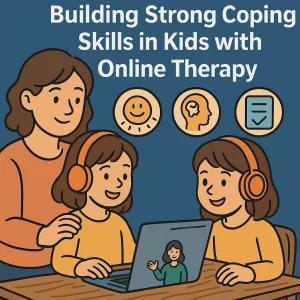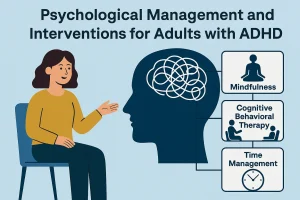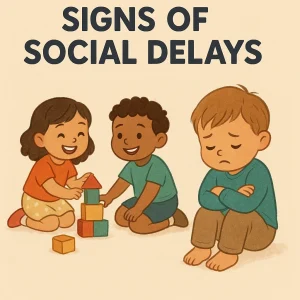Easy DIY Tips to Cut Screen Time and Prevent Still Face Syndrome
Last Updated: January 18, 2025
Are you worried about your child spending too much time in front of a screen? You’re not alone. Many parents are facing the challenge of balancing screen time, especially with how easy it has become to rely on digital devices for learning and entertainment. However, too much screen time can impact your child’s development, both mentally and emotionally. One concerning result of excessive screen use is Still Face Syndrome, which can occur when children lack real emotional interaction due to prolonged exposure to screens.
But don’t worry—we’re here to help. In this article, we’ll share easy DIY tips that you can use to cut back on screen time while still keeping your child engaged and entertained. By following these simple steps, you can not only reduce their screen time but also create a stronger emotional bond, helping to prevent issues like Still Face Syndrome. Let’s get started!
What Is Still Face Syndrome?
Have you ever noticed how your child lights up when you respond to their laughter or talk to them face-to-face? This is because children, especially younger ones, rely heavily on emotional feedback to feel connected and understood. But when they spend too much time in front of screens, they miss out on this important interaction. This can lead to something called Still Face Syndrome.
Still Face Syndrome happens when a child doesn’t get the emotional response they need. Screens, unlike human faces, don’t offer real-time reactions, smiles, or encouragement. Over time, this lack of emotional feedback can make a child feel disconnected and can slow down their emotional development. It’s like talking to someone who never responds—eventually, it feels empty.
Why does it matter?
Face-to-face interaction isn’t just a nice-to-have—it’s essential for your child’s growth. When kids don’t experience this kind of interaction regularly, they may struggle with recognizing emotions, forming strong bonds, and developing healthy social skills. Excessive screen time robs them of the opportunity to practice and grow in these areas.
Also Read: Identifying and Managing Still Face Syndrome in Children
The Negative Effects of Too Much Screen Time
We’ve all been there—it’s easy to rely on screens to keep children entertained or learning, but too much screen time can have lasting effects on both their brain and body. While a bit of screen time can be educational, excessive use can lead to challenges that might not be so obvious right away.
How Screen Time Affects the Brain and Body
When children spend too much time in front of a screen, it affects their ability to focus and stay engaged with the real world. Have you noticed that after a long session of watching TV or playing on a tablet, your child might seem restless or zoned out? That’s because screens are overstimulating their brains, making it harder for them to focus on slower-paced activities like reading or playing creatively.
Excessive screen time can also impact social skills. Kids who spend a lot of time on screens may miss out on key face-to-face interactions where they learn important skills like reading emotions, taking turns in conversation, and making eye contact.
From a physical standpoint, too much screen time can lead to eye strain and even affect their posture. Children who sit for long periods in front of a device may slouch or strain their eyes, which can lead to headaches or discomfort.
[youtube v=”TOoWqvX7T2A”]
Emotional Impact of Screen Time
Emotionally, screens create a gap between your child and the real world. Children need real emotional interaction, where they can see your facial expressions and hear the tone of your voice. Without this, they may start to feel emotionally disconnected. This lack of emotional feedback can contribute to conditions like Still Face Syndrome, where kids don’t experience the warmth and connection they need for healthy emotional growth.
Know more about on 7 Ways Too Much Screen Time Could Affect Your Child’s Mood
Why DIY Solutions Work Well
When it comes to managing screen time, DIY activities are a fantastic option for many reasons. They’re simple, effective, and can easily be adapted to suit your child’s needs and your family’s lifestyle. Let’s explore why DIY solutions are a great way to reduce screen time and boost your child’s development.
Customizable to Your Child’s Interests
One of the best things about DIY activities is that they’re entirely flexible. You can tailor them to your child’s age, abilities, and preferences. Whether your little one loves building things, crafting, or playing pretend, there’s a DIY activity that will capture their interest. By creating activities that fit your child’s unique likes and needs, you’ll find that they’re more engaged and less likely to miss their screen time.
For example, if your child enjoys drawing, you can set up a DIY art station with simple materials like paper, crayons, or watercolors. If they love exploring, create a scavenger hunt around your home or yard. These kinds of activities keep your child entertained without the need for a screen and help them develop creativity and problem-solving skills.
Inexpensive and Fun
Many parents worry that cutting back on screen time will mean spending a lot of money on alternatives, but that’s not the case with DIY solutions. Most DIY activities are budget-friendly and can be done using materials you already have at home. From simple crafts to fun outdoor games, you don’t need to spend a fortune to keep your child entertained and learning.
For example, making homemade playdough or building with recycled materials can be both fun and affordable. These activities not only provide hands-on fun but also stimulate your child’s creativity and motor skills. Plus, DIY projects give children a sense of accomplishment, knowing they’ve made something themselves.
Strengthening Family Bonds
Perhaps the most rewarding aspect of DIY activities is the opportunity to strengthen your connection with your child. Doing activities together allows for quality bonding time, where you can interact, share ideas, and enjoy each other’s company. This face-to-face interaction is crucial for your child’s emotional and social development, helping to prevent issues like Still Face Syndrome.
When you engage in these activities with your child, you’re also creating memories and reinforcing the importance of spending time together without screens. Whether it’s a family game night, cooking a simple recipe together, or tackling a DIY craft, these moments help build a deeper bond and enhance your child’s sense of security and love.
Easy DIY Tips to Reduce Screen Time
It can feel overwhelming trying to cut down on screen time, especially when screens have become such a big part of daily life. But the good news is, you can do it! All it takes is a few easy, DIY activities to keep your child engaged and entertained without the need for a screen. Here are some simple ideas to help you get started:
[youtube v=”zFtEPoN22DA”]
Set a Screen Time Schedule
The first step in reducing screen time is to create a balance. It’s important to set clear limits on how much time your child spends on screens each day. You can start by setting a daily or weekly screen time limit that works for your family. Having a schedule gives structure to the day and allows time for other activities, like play and learning.
For example, you might allow one hour of screen time after lunch, but spend the morning doing activities that encourage creativity or movement. A schedule helps both you and your child stick to the plan and make room for more enriching, screen-free fun.
Try DIY Activities
Now, let’s dive into some easy, DIY activities you can do at home to make screen-free time more fun!
- Arts and Crafts
Kids love to create, and with a few household items, you can open up a world of artistic fun. Encourage your child to draw, paint, or create something using things you already have at home—like paper, markers, or recycled materials. Crafting helps develop fine motor skills, encourages creativity, and gives your child a sense of accomplishment when they see what they’ve made. - Interactive Games
Interactive play is a great way to keep your child engaged while encouraging critical thinking and social skills. Simple games like building with blocks, solving puzzles, or pretending to run a “store” are perfect for hands-on fun. These activities require focus and creativity, making them a wonderful alternative to screen-based entertainment. - Outdoor Play
There’s nothing like the great outdoors to keep your child busy and happy! Whether it’s a nature walk, a backyard scavenger hunt, or a game of catch, outdoor play gives children the physical activity they need. Plus, it’s an easy way to reduce screen time while allowing them to explore the world around them. - Sensory Play
Younger kids, especially, love sensory activities. You can make homemade playdough, slime, or even fill a bin with rice or sand and let them explore textures. Sensory play keeps children entertained and helps develop their fine motor skills and creativity—all without the need for a screen. - Read Together
Reading is one of the best ways to boost your child’s imagination and language skills. Make time every day to read together. You can choose a variety of books that interest your child, whether they love animals, adventure, or fairy tales. Reading together not only reduces screen time but also strengthens your bond with your child.
How to Prevent Still Face Syndrome
One of the biggest challenges with screen time is ensuring that your child doesn’t miss out on the emotional connections that come from face-to-face interactions. Still Face Syndrome can occur when children don’t receive the emotional responses they need from screens, leading to a lack of connection. But don’t worry—there are simple ways you can prevent this from happening.
1. Face-to-Face Play
Spending time playing face-to-face with your child is one of the most effective ways to prevent Still Face Syndrome. Engage in play that involves eye contact and conversation, whether it’s through a game, reading, or imaginative play. These moments of direct interaction help children learn to recognize emotions and respond to them.
During play, make sure to maintain eye contact, smile, and talk to your child. This type of engagement strengthens emotional bonds and helps your child feel connected. Even something as simple as laughing together during a game can go a long way in fostering that emotional connection.
2. Be Responsive
Children thrive on real-time feedback. When they express joy, sadness, or frustration, it’s essential to respond with warmth and support. This kind of responsiveness shows your child that their feelings matter and that you’re paying attention to them.
For example, if your child is excited about something they’ve built, praise their efforts and ask them to tell you more about it. If they’re upset, offer comfort and help them talk through their feelings. These little moments of acknowledgment go a long way in developing emotional security and preventing emotional disconnection that can arise from too much passive screen use.
3. Co-View Content
While reducing screen time is important, there are times when screens are a part of the day. In these cases, watching content together can make a big difference. Co-viewing means sitting with your child while they watch something and making the experience more interactive.
Ask questions about what’s happening on the screen, pause to discuss the storyline, and encourage your child to share their thoughts. This helps transform a passive screen activity into an interactive one, where your child still feels emotionally connected to you.
4. Limit Passive Screen Time
Not all screen time is created equal. Passive screen time—where children simply sit and watch without interacting—can contribute to emotional disconnection. Try to avoid letting screens become the default activity, especially when there are other options available that encourage more interaction.
Encourage interactive play or activities like drawing, building, or even helping around the house instead of turning to screens for entertainment. This doesn’t mean you have to eliminate screens entirely, but it’s important to ensure they don’t replace important face-to-face moments.
Also Read: Top 5 Parenting Tips to Prevent Still Face Syndrome
Tips for Healthy Screen Time
Managing screen time doesn’t have to be an all-or-nothing approach. Finding a healthy balance is key, so your child can still benefit from the good that screens offer without letting them take over. Here are a few simple tips to ensure screen time is both healthy and manageable.
1. Use Screens Wisely
Screens can be a great tool for learning when used wisely. There are plenty of videos, and games designed to teach kids new skills, from math to reading and even coding. However, it’s essential to make sure screen time is purposeful. Instead of letting your child aimlessly watch videos or play games, focus on using screens for educational activities that stimulate their mind.
For example, if your child loves animals, you can find interactive videos or apps that teach them about different species and their habitats. The goal is to ensure that screen time has value and doesn’t turn into just passive entertainment.
2. Slowly Reduce Screen Time
It’s tempting to cut screen time drastically, but doing so all at once can lead to resistance and frustration. Instead, gradually reduce the time your child spends on screens. Start by decreasing it in small increments—perhaps 15 minutes less per day. This gentle transition will make it easier for both you and your child to adjust to the new routine without it feeling too restrictive.
For instance, if your child is used to two hours of screen time after school, start by reducing it to an hour and 45 minutes and gradually continue cutting back. This way, you can replace those minutes with engaging, screen-free activities like reading, arts and crafts, or outdoor play.
3. Stick to a Routine
Children thrive on structure, and having a routine helps them know what to expect. Set specific times for screen use, and make sure it’s balanced with other activities. For example, you might allow screen time after homework or chores, ensuring it’s part of a healthy routine rather than a go-to activity. Having dedicated times for screen use and other activities helps create boundaries, so screens don’t dominate your child’s day.
You could implement a routine where your child spends 30 minutes on a screen for educational purposes and then transitions to an hour of outdoor play or interactive family time. By sticking to a predictable routine, you’re helping your child understand that screens are just one part of the day, not the centerpiece.
Screen Time Schedule and Alternatives
| Time of Day | Screen Activity | Screen-Free Alternatives |
|---|---|---|
| Morning | Educational video (20 min) | Arts & Crafts: Set up a craft station with coloring, painting, or building using recycled materials. Interactive Games: Encourage building with blocks, solving puzzles, or role-playing imaginative games like “store” or “teacher.” |
| Late Morning | Break from screens | Outdoor Play: Take a nature walk, play in the backyard, or organize a mini scavenger hunt. Sensory Play: Create DIY playdough, sensory bins, or slime for hands-on fun. |
| Afternoon | Learning app (30 min) | Reading Together: Sit down for a family reading session, picking books that interest your child’s imagination and curiosity. Family Activity: Cook a simple recipe together, work on a DIY project, or play a board game. |
| Early Evening | Family movie (co-viewing) (1 hr) | Face-to-Face Play: Engage in storytelling, eye contact, and hands-on play with your child. Discussion Time: After co-viewing, discuss the movie’s themes and characters to make it more interactive. |
| Night (Before Bed) | Quiet time, listening to music or a calming audiobook (15-30 min) | Calming Activities: Opt for bedtime stories, simple puzzles, or talking about the day to wind down and prepare for sleep. |
Conclusion
Reducing screen time is one of the best things you can do for your child’s overall health and development. By cutting back on screen use and encouraging more face-to-face interactions, you help prevent issues like Still Face Syndrome and allow your child to build stronger emotional connections. The DIY activities shared in this article are easy ways to make the process fun and enjoyable, while also giving your child a chance to explore new skills and experiences.
Start small by adding these activities to your daily routine. Whether it’s setting limits on screen time, playing together, or trying new creative projects, these simple changes can make a big difference in your child’s life. At Wellness Hub, we are here to support you with more tips and ideas to create a healthy balance for your family. Visit our website for more helpful resources on building a positive, screen-free environment for your child.
Frequently Asked Questions:
1. How can I reduce my child’s screen time without causing frustration?
Start by gradually cutting back screen time instead of eliminating it all at once. Introduce fun, engaging DIY activities like arts and crafts, sensory play, or outdoor games to keep your child entertained and make the transition smoother. A screen time schedule can also help maintain balance.
2. What is Still Face Syndrome, and how does it affect my child?
Still Face Syndrome occurs when children do not receive emotional feedback from screens, leading to feelings of disconnection. It can impact their emotional development, making face-to-face interactions and responsive play essential for healthy social growth.
3. What are some easy DIY activities to replace screen time?
You can try activities like drawing, painting, building with blocks, going on nature walks, or reading together. Sensory play with homemade playdough or slime is also a great way to keep young children engaged without using screens.
4. How can I prevent Still Face Syndrome in my child?
To prevent Still Face Syndrome, spend more time in face-to-face play, engage in eye contact, and be responsive to your child’s emotions. Limiting passive screen time and watching content together, where you interact and discuss what’s happening, also helps.
5. Is some screen time okay for my child?
Yes, moderate screen time, especially when used for educational purposes, is fine. The key is to ensure that screen time is balanced with other interactive, real-world activities that promote social and emotional development.
6. How do I create a healthy screen time routine for my child?
Set specific limits on daily screen use and incorporate a variety of other activities throughout the day, like outdoor play, reading, or arts and crafts. Sticking to a routine helps your child understand when it’s time for screens and when it’s time for other activities.
7. Can co-viewing content with my child reduce the negative effects of screen time?
Yes, co-viewing is a great way to turn screen time into an interactive experience. Watching together allows you to ask questions, discuss what’s happening, and create an opportunity for learning and bonding, which reduces the risks associated with passive screen time.
8. How can I make screen time more educational for my child?
To make screen time more educational, focus on apps, games, and videos that encourage learning. Look for content that teaches problem-solving, creativity, and critical thinking, such as educational shows, interactive reading apps, or coding games. Co-viewing with your child and discussing the content also makes the experience more interactive and beneficial.
9. How do I know if my child is spending too much time on screens?
Signs of excessive screen time include difficulty concentrating, irritability when not using screens, reluctance to engage in other activities, or physical symptoms like eye strain and poor posture. If screen time starts replacing face-to-face interactions or active play, it’s time to re-evaluate the balance and introduce more hands-on, real-world activities.
10. What are the long-term effects of too much screen time on children?
Long-term effects of excessive screen time can include delayed social skills, emotional disconnection, and even issues like Still Face Syndrome. Physically, it can lead to problems like poor posture, eye strain, and a sedentary lifestyle. A balanced approach to screen time, with limits and alternative activities, helps avoid these negative outcomes.
About the Author:
Shravanaveena Gajula
M.Sc ., Speech and Language Pathology (9+ years of experience)
Shravanaveena Gajula is a dedicated Audiologist and Speech-Language Pathologist with a BASLP and an M.Sc in Speech and Language Pathology. With experience spanning multiple settings, including Wellness Hub and Ashray Akruti, Veena specializes in a wide range of disorders from developmental issues in children to speech and language assessments in adults. Her expertise includes parent counseling, managing speech sound and fluency disorders, and creating individualized therapy programs. Veena is also PROMPT certified and an author of several insightful blogs on speech and language pathology, aiming to educate and assist caregivers in supporting their loved ones.
Book your Free Consultation Today
Parent/Caregiver Info:
Client’s Details:
* Error Message









